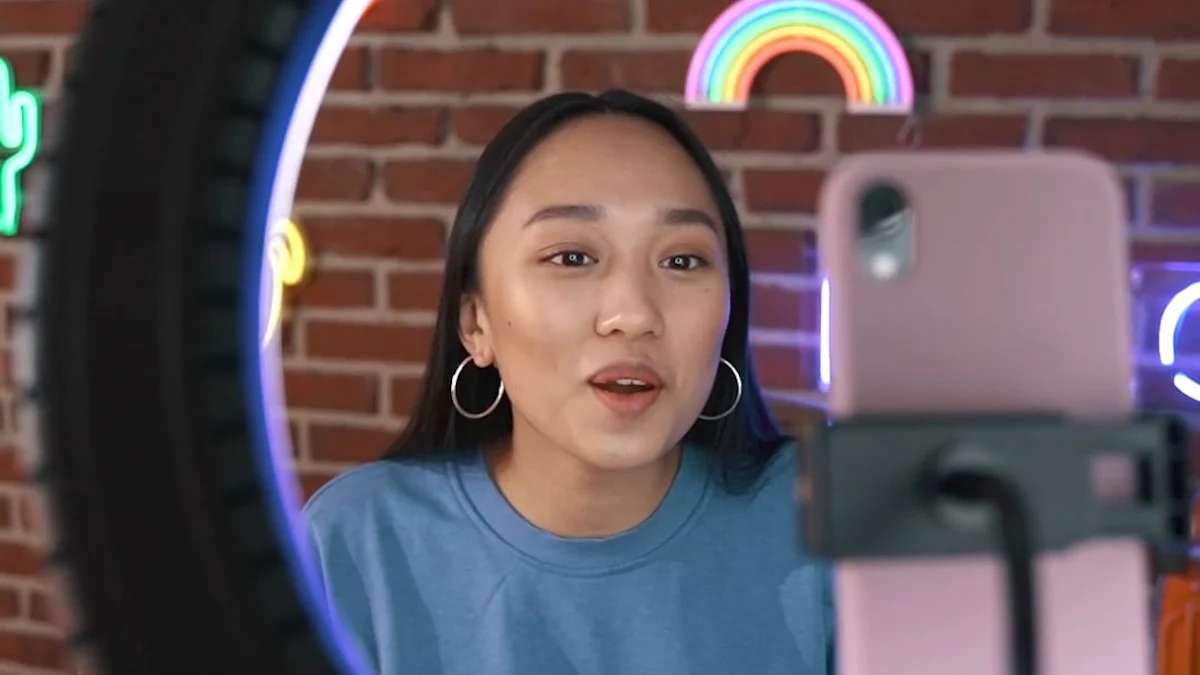6 Tips for Crafting Effective Influencer Marketing Campaigns

Influencer marketing has become a game-changer for brands looking to connect with their audience. It’s not just about visibility—it’s about measurable impact. Did you know the average ROI of influencer marketing is 11 times higher than other digital media? That’s huge! Plus, brands are expected to spend $7.14 billion on influencer marketing in 2024, showing how much trust businesses place in this strategy.
Why does it work so well? People trust influencers. Nearly half of consumers rely on influencer recommendations when making decisions. This trust translates into real results, like increased sales and stronger customer loyalty. But here’s the thing: success doesn’t happen by chance. You need a clear plan to make your influencer marketing campaigns truly effective.
Pro Tip: Focus on building authentic connections with influencers who align with your brand. It’s the secret sauce for long-term success.
| Statistic | Description | |-------------------------------|-----------------------------------------------| | ROI | 11x higher than other forms of digital media | | Budget | $7.14 billion projected spend in 2024 | | Consumer reliance on influencers | 49% of consumers trust influencer recommendations |
Define Objectives for Your Influencer Marketing Campaign
Before diving into influencer marketing, you need to know what you’re aiming for. Clear objectives are the foundation of any successful influencer marketing campaign. They guide your efforts, keep your team aligned, and ensure you’re spending your resources wisely.
Set Measurable Goals
What does success look like for your campaign? Setting measurable goals helps you answer that question. Whether you want to boost brand awareness or drive more leads, having specific targets keeps you focused. For example, you might aim to increase website traffic by 20% or generate 50 new leads within a month. These goals give you something concrete to work toward.
Using the SMART method—specific, measurable, achievable, realistic, and time-based—can make your goals even more effective. This approach ensures you’re not just throwing ideas into the wind. Instead, you’re creating a roadmap for success. Plus, marketers who set clear goals are four times more likely to achieve their desired results. That’s a stat worth paying attention to!
Key performance indicators (KPIs) like reach, engagement, and conversions are also essential. They help you track progress and measure the impact of your influencer collaborations. For instance, if you’re working with micro-influencers, you might focus on engagement rates to gauge how well their audience connects with your brand.
Understand Your Target Audience
Your campaign’s success hinges on understanding your audience. Who are they? What do they care about? Answering these questions helps you craft a strategy that resonates. Start by conducting market research to uncover your audience’s preferences, behaviors, and pain points. This step gives you valuable insights into what makes them tick.
Segmenting your audience is another smart move. It allows you to tailor your influencer marketing strategy to different groups, ensuring your message hits the mark. For example, if your audience includes Gen Z and millennials, you might choose influencers who create content that appeals to each demographic.
Partnering with the right influencers is crucial here. Look for creators whose values and content align with your target audience. This alignment ensures your campaign feels authentic and builds trust. Without this connection, your efforts could backfire. In fact, 61% of marketers say finding the right influencers is one of their biggest challenges. But when you get it right, the results can be game-changing.
Pro Tip: Don’t skip the research phase. A deep understanding of your audience can save you from costly mistakes and help you create campaigns that truly deliver.
Select the Right Influencers for Your Campaign
Choosing the right influencers can make or break your influencer marketing campaigns. The right influencers not only amplify your message but also ensure it resonates with your target audience. Let’s dive into how you can align influencers with your brand and evaluate their engagement and authenticity.
Align Influencers with Your Brand
Not every influencer is the right fit for your brand. To find the perfect match, start by defining your brand’s core values and identity. What does your brand stand for? What’s your mission? Once you have clarity, look for influencers whose content and values align with yours. For example, if your brand promotes sustainability, partnering with influencers who advocate for eco-friendly practices makes sense.
Here’s a quick checklist to help you evaluate potential influencers:
- Review their past partnerships. Have they worked with brands similar to yours?
- Analyze their content. Does it match your brand’s tone and style?
- Check their audience demographics. Are their followers similar to your target audience?
- Assess their storytelling skills. Can they create authentic content that connects with their followers?
- Communicate openly. Discuss your expectations and gauge their genuine interest in your brand.
| Criteria | Description | |------------------------------|-------------------------------------------------------------------------------------------------| | Audience Demographics | Ensure the influencer’s audience aligns with your target market. | | E-A-T Score | Partner with influencers who demonstrate expertise, authoritativeness, and trustworthiness. | | Audience Sentiment | Look for influencers whose followers react positively to their content. | | Storytelling | Choose influencers who can tell compelling stories that drive action. | | Audience Size | Match the influencer’s audience size to your campaign goals. |
Pro Tip: Don’t just focus on follower count. Micro-influencers often have higher engagement rates and can deliver better results for niche campaigns.
Evaluate Engagement and Authenticity
Engagement is a key indicator of an influencer’s effectiveness. High engagement rates show that their followers are genuinely interested in their content. Look beyond likes and follower counts. Instead, focus on meaningful interactions like comments, shares, and clicks. These metrics reveal how well the influencer connects with their audience.
Here are some metrics to evaluate:
- Likes, shares, and comments
- Click-through rates
- Engagement by reach and impressions
- Cost per engagement (CPE)
- Daily engagement rate
Authenticity is just as important. Audiences can spot insincere endorsements from a mile away. Partnering with influencers who genuinely believe in your brand ensures their promotions feel natural. Review their past collaborations to see if they’ve maintained authenticity. Also, analyze the quality of their interactions with followers. Do they respond to comments? Do their followers trust their recommendations?
Note: Avoid influencers who promote too many brands. Oversaturation can dilute their credibility and impact your campaign’s success.
By aligning with the right influencers and evaluating their engagement and authenticity, you’ll set your influencer marketing campaign up for success.
Create Authentic and Engaging Content

Creating authentic and engaging content is the heart of any influencer marketing campaign. It’s not just about promoting your brand—it’s about connecting with your audience in a way that feels genuine and relatable. Let’s explore how you can collaborate with influencers and use storytelling to make your campaigns stand out.
Collaborate with Influencers on Content
When working with influencers, collaboration is key. You want their creativity to shine while ensuring the content aligns with your brand’s goals. Start by establishing clear communication. Discuss your expectations, share your vision, and listen to their ideas. Influencers know their audience best, so trust their input to create content that resonates.
Set clear guidelines to avoid confusion. A written agreement outlining the collaboration terms, creative direction, and performance expectations can save you from headaches later. For example, you might provide a content outline or suggest themes, but leave room for the influencer’s unique voice. This balance ensures the content feels authentic rather than scripted.
Here are some examples of engaging content you can create together:
- Host a giveaway, like a fashion influencer offering a chance to win your latest product.
- Collaborate on tutorials, such as a DIY influencer showcasing your crafting supplies.
- Partner on product reviews, like a tech influencer unboxing your gadget.
- Feature influencers on your blog, such as a finance expert writing tips for your audience.
Remember, strong relationships with influencers lead to better results. Keep communication open and build trust throughout the process.
Pro Tip: Engaging influencers who genuinely believe in your brand will make their content more impactful and relatable.
Focus on Storytelling in Your Campaign
Storytelling is a powerful tool in influencer marketing. People connect with stories, not sales pitches. When influencers share personal experiences with your brand, it creates an emotional bond with their audience. For instance, a fitness influencer could talk about overcoming challenges using your products, inspiring their followers to take action.
Visual storytelling also plays a big role. High-quality photos and videos can amplify your message and make it more memorable. Encourage influencers to incorporate your brand into their daily routines. A beauty influencer using your skincare products in their morning routine feels natural and relatable, boosting trust.
Here are some storytelling techniques to consider:
- Personalize the story to make it relatable.
- Use strong visuals to evoke emotions.
- Stay consistent with your brand’s values.
- Include user-generated content to foster community.
Did you know more than 50% of people find influencer content more compelling than traditional ads? That’s because authentic stories build credibility and drive engagement. By focusing on storytelling, you’ll create an influencer marketing strategy that not only captures attention but also delivers meaningful results.
Pro Tip: Don’t forget to include a clear call to action in your stories. Whether it’s visiting your website or trying a product, guide your audience on what to do next.
Measure and Optimize Your Influencer Marketing Campaign
Tracking and optimizing your influencer marketing campaign is essential for achieving effective results. Without proper measurement, you can’t know what’s working or where to improve. Let’s explore how to track key performance indicators (KPIs) and analyze your campaign performance to ensure a successful campaign.
Track Key Performance Indicators (KPIs)
KPIs are the backbone of measuring your campaign’s success. They help you understand how well your influencers are driving results. Start by identifying the metrics that align with your goals. For example, if you want to boost brand awareness, focus on reach and impressions. If conversions are your priority, track click-through rates and sales.
Here are some common KPIs to monitor:
- Reach and impressions: Measure how many people see your campaign.
- Engagement: Track likes, comments, shares, and clicks to gauge audience interaction.
- Conversions: Monitor how many users take desired actions, like making a purchase.
- Brand sentiment: Assess how your audience feels about your brand after the campaign.
- Campaign hashtags: Use branded hashtags to track mentions and engagement.
To make tracking easier, use tools like UTM parameters, promo codes, and trackable links. These methods let you pinpoint which influencers drive the most traffic and conversions. For instance, assigning unique promo codes to micro-influencers can help you measure their individual impact.
Pro Tip: Don’t just track numbers. Look at the quality of engagement. Comments and shares often reveal more about audience connection than likes alone.
Analyze ROI and Campaign Effectiveness
Understanding your return on investment (ROI) is crucial for optimizing your strategy. Start by collecting data on engagement, conversions, sales, and costs. Then, calculate ROI using this formula:
(Total Revenue – Total Costs) / Total Costs x 100.
Here’s how to analyze your campaign step by step:
- Gather data on metrics like sales revenue, traffic, and costs.
- Use UTM parameters and promo codes to attribute results to specific influencers.
- Calculate total revenue and costs.
- Determine ROI to see if your campaign delivered effective results.
- Adjust your strategy based on insights.
For example, if one influencer generates high engagement but low conversions, you might shift focus to those driving sales. Tools like Google Analytics or influencer marketing platforms can simplify this process. They provide detailed reports on campaign performance, helping you make data-driven decisions.
Pro Tip: Regularly review your campaigns to spot trends and refine your approach. Continuous optimization leads to better results over time.
By tracking KPIs and analyzing ROI, you’ll gain valuable insights into your influencer marketing campaigns. This data-driven approach ensures you’re not just spending but investing in strategies that deliver meaningful outcomes.
Build Long-Term Relationships with Influencers

Building long-term relationships with influencers is one of the smartest moves you can make in influencer marketing. These partnerships go beyond one-off campaigns, creating a foundation for trust, consistency, and better results over time. Let’s explore how you can foster genuine partnerships and encourage consistent collaborations.
Foster Genuine Partnerships
Strong influencer partnerships don’t happen overnight. They require effort, trust, and a shared vision. Start by focusing on authenticity. When influencers genuinely connect with your brand, their audience feels it too. This connection builds credibility and makes their endorsements more impactful.
To foster genuine partnerships, try these strategies:
- Empower influencers with creative freedom. Let them integrate your brand into their content in a way that feels natural.
- Be transparent about your collaboration. Disclose paid partnerships to maintain trust with their audience.
- Build relationships over time. Long-term partnerships enhance authenticity and allow influencers to truly understand your brand’s values.
Long-term partnerships also come with added benefits:
- They ensure consistent brand messaging as influencers become more familiar with your goals.
- They deepen audience trust and loyalty, as followers see the influencer’s ongoing connection with your brand.
- They’re cost-efficient. You can negotiate better rates and get more value from extended collaborations.
Pro Tip: Treat influencers as partners, not just promoters. Open communication and mutual respect go a long way in building lasting relationships.
Encourage Consistent Collaborations
Consistency is key in influencer marketing. When you work with influencers repeatedly, they become ambassadors for your brand. Their audience starts associating them with your products, which strengthens your brand’s authority and trustworthiness.
Here’s why consistent collaborations matter:
- They increase brand awareness by introducing your products to new customer segments.
- They ensure your messaging stays aligned and consistent, which builds trust with audiences.
- They improve content quality. Influencers who know your brand well can create more impactful and authentic content.
To encourage consistent collaborations, focus on maintaining a strong relationship. Provide influencers with feedback, recognize their efforts, and involve them in your long-term strategy. This approach keeps them engaged and motivated to deliver their best work.
Pro Tip: Avoid working with influencers who frequently promote competing brands. Consistency in partnerships helps your brand stay top of mind with their audience.
By fostering genuine partnerships and encouraging consistent collaborations, you’ll create a winning influencer marketing strategy. These relationships don’t just drive short-term results—they build a foundation for long-term success.
Stay Informed on Influencer Marketing Trends and Compliance
Staying ahead in influencer marketing means keeping up with trends and ensuring your campaigns follow ethical guidelines. Let’s explore how you can adapt to emerging trends and maintain compliance to build trust and achieve better results.
Adapt to Emerging Trends in Influencer Marketing
Influencer marketing is constantly evolving, and you need to stay flexible to keep your strategy effective. Here are some trends shaping the industry right now:
- Authenticity Over Perfection: Audiences crave genuine connections. They prefer influencers who share relatable, unpolished content over overly curated posts.
- Rise of Micro-Influencers: Micro-influencers are gaining popularity. Their niche expertise and higher engagement rates make them a great choice for targeted campaigns.
- Shoppable Live Streaming and Social Commerce: Combining entertainment with e-commerce is a game-changer. Features like live-streamed product showcases create real-time shopping experiences.
- AI-Powered Campaigns: AI tools are simplifying influencer discovery and campaign management. This lets you focus more on strategy and less on logistics.
Did you know 61% of people have made a purchase based on an influencer’s recommendation in the past six months? That’s the power of staying on top of trends. Brands like Nike and Starbucks have successfully adapted by building authentic partnerships and creating shareable content. Following their lead can help you connect with your audience in meaningful ways.
Pro Tip: Regularly review your strategy to incorporate new trends. This keeps your campaigns fresh and relevant.
Ensure Legal and Ethical Compliance
Compliance isn’t just about following rules—it’s about building trust. Transparency and honesty are essential in influencer marketing. Here’s how you can ensure your campaigns stay ethical:
- Follow FTC guidelines and social media platform rules. Disclose sponsored content clearly using hashtags like #ad or #sponsored.
- Choose influencers who align with your brand’s values. Authentic partnerships enhance credibility and consumer trust.
- Encourage influencers to share honest opinions. Avoid pressuring them to give only positive reviews.
Content creators also have a moral responsibility to produce accurate and responsible content. By collaborating with ethical influencers, you can maintain integrity and strengthen your brand’s reputation. Long-term partnerships, like those built by brands such as Daniel Wellington and Gymshark, show how trust and consistency can lead to lasting success.
Note: Non-compliance can harm your brand’s image and lead to legal issues. Always prioritize transparency and ethical practices.
By adapting to trends and ensuring compliance, you’ll create a strategy that not only delivers results but also builds lasting trust with your audience.
Crafting an effective influencer marketing campaign boils down to six key steps. Start by setting clear goals and knowing your audience. Choose influencers who align with your values and focus on creating authentic, engaging content. Track metrics like impressions, CTR, and ROI to measure success. Build long-term partnerships for consistency, and stay updated on trends to keep your strategy fresh.
Apply these strategies to connect with your audience and grow your brand. Remember, influencer marketing is always evolving. Keep learning, adapting, and refining your approach for lasting success.
FAQ
What is the best way to find the right influencers for my brand?
Start by identifying influencers who share your brand’s values. Look at their audience demographics, engagement rates, and past collaborations. Tools like influencer marketing platforms can help you narrow down your options. Always prioritize authenticity over follower count.
Tip: Micro-influencers often deliver better engagement for niche campaigns.
How do I measure the success of an influencer marketing campaign?
Track metrics like reach, engagement, and conversions. Use tools like UTM links or promo codes to attribute results to specific influencers. Calculate ROI to see if your campaign met its goals. Regularly review performance to refine your strategy.
Pro Tip: Focus on quality engagement, not just numbers.
Should I work with influencers on a one-time basis or build long-term partnerships?
Long-term partnerships usually yield better results. They create consistency and build trust with the influencer’s audience. One-off campaigns can work for specific goals, but ongoing collaborations strengthen your brand’s credibility.
Note: Treat influencers as partners, not just promoters, to foster lasting relationships.
How can I ensure my influencer campaigns comply with legal guidelines?
Always disclose paid partnerships clearly. Use hashtags like #ad or #sponsored to maintain transparency. Follow FTC guidelines and ensure influencers share honest opinions about your brand. Ethical practices build trust with your audience.
Reminder: Non-compliance can harm your brand’s reputation and lead to legal issues.
What’s the biggest mistake to avoid in influencer marketing?
The biggest mistake is choosing influencers based solely on follower count. High numbers don’t guarantee success. Focus on engagement, authenticity, and alignment with your brand. A poorly matched influencer can hurt your campaign’s credibility.
Tip: Research thoroughly to find influencers who truly connect with your audience.
See Also
7 Key Strategies for Effective Influencer Marketing
Creating an Ideal Brief for Influencer Marketing
7 Essential Steps for Your Influencer Marketing Platform
